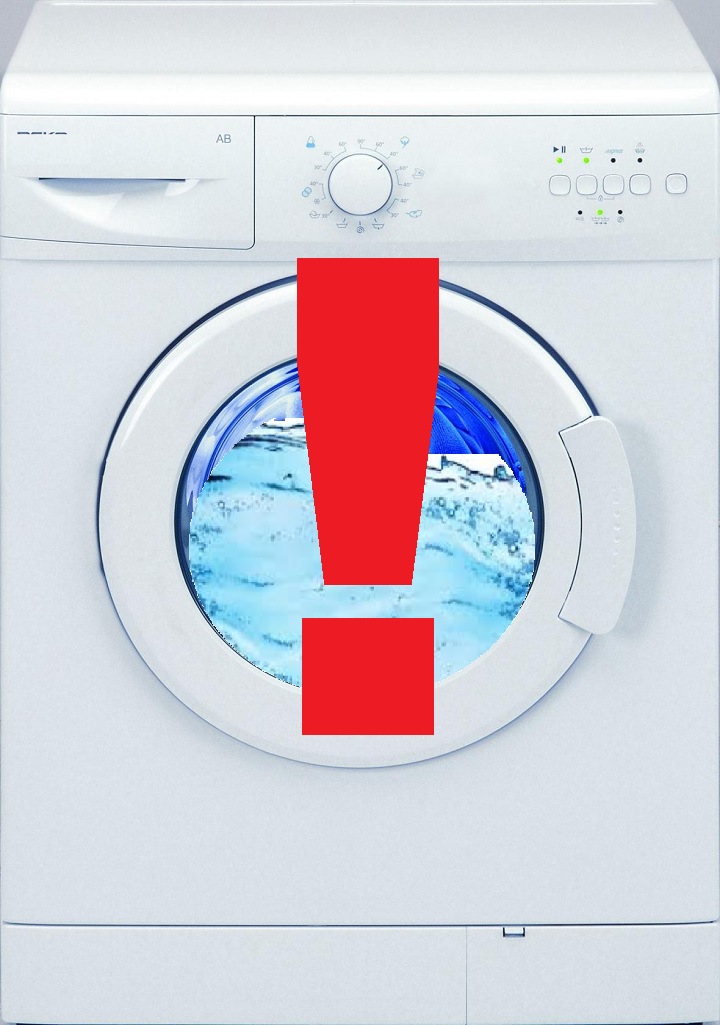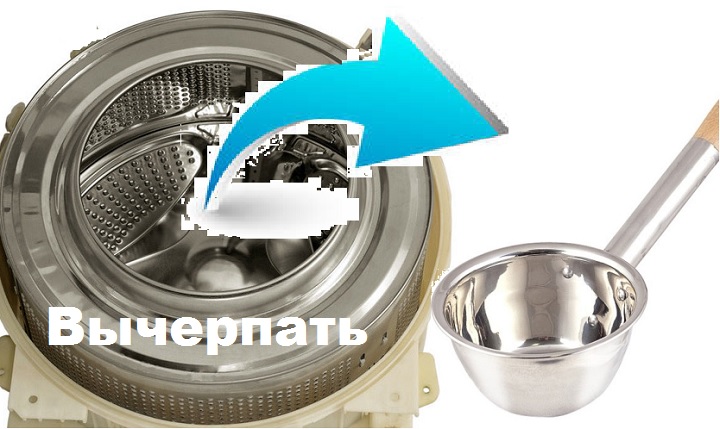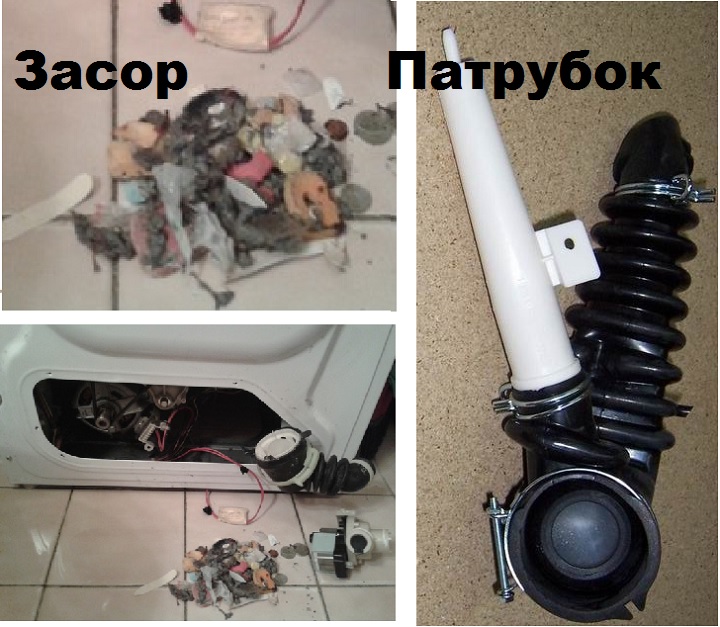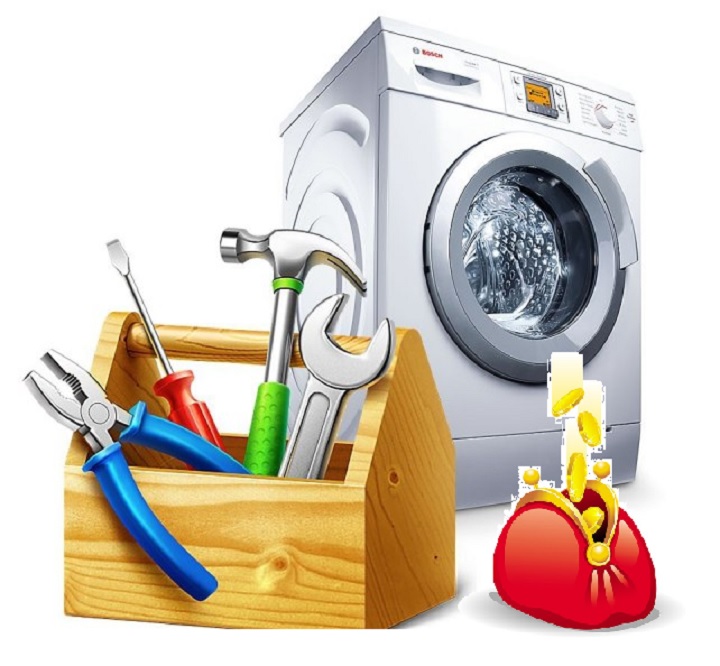 Loaded things, selected the appropriate mode, pressed "start", and on your return instead of freshly laundered laundry you were greeted with complete silence and water in the washing machine.
Loaded things, selected the appropriate mode, pressed "start", and on your return instead of freshly laundered laundry you were greeted with complete silence and water in the washing machine.
Undoubtedly something is wrong.
And before you find out the reasons for this unhappy incident, you should first save the laundry from souring and spoiling.
How to drain the washing machine? We will talk about this in this article.
There is a problem - the water does not drain itself
But how to open the doorwhen the tank is full? Yes and it will not work, most likely, because your machine probably has a protection against opening when the minimum water level is exceeded. So how do you drain a washing machine in this situation?
Five Ways to Drain Your Machine
Regardless of the brand, there are five ways to Drain your washing machineIf she did not do it on her own. To do this, you will need a basin, a flat screwdriver (knife) and rags for the floor.
Here are a few ways to drain the washing machine.
№ 1. Using the drain hose
The sequence of operations is as follows:
 Disconnect the drain hose from the sewer collar (or siphon) and remove it from the bracket securing the hose to the machine, if any;
Disconnect the drain hose from the sewer collar (or siphon) and remove it from the bracket securing the hose to the machine, if any;- Pull out the end of the hose from the sewer collar (or siphon) and lower it into the basin;
- lower the hose as low as possible, to let the water flow into the basin under its own pressure.
Thus, most likely, you will be able to drain the washing machine Indesit, Ariston and Samsung.
But to drain in such a way the water from the washing machine Bosch or Siemens, probably will not work. These manufacturers often have internal protection against accidental water drainage, and this method is unlikely to help you in this option.
In order to understand whether or not it will be possible to drain the water in this way, read what is written about this in the instructions to the machine.
№ 2. Using the drain filter
If you remove the bottom panel, located in the lower front of the machine, you can find there a special filter that protects the drain pump from all sorts of things falling into the drain from the pockets of clothes.
With the help of this filter, it is also possible to drain the water from the machine:
- remove the bottom panel (usually by picking it up with a knife or screwdriver)
- Carefully tilt the machine and lean it against the wall so that a basin fits under the machine; be careful not to let the basin jump out;
- Turn the filter handle to the left (just so it does not fall out) and pour the water into the basin.
With this method, you'll probably have to do extra work with a rag to collect the splashing water from the floor.
№ 3. Using the emergency drain hose
 If the machine won't drain on its own, you can use an emergency hose. Of course, you can do this only if it is provided by the design of your washing machine.
If the machine won't drain on its own, you can use an emergency hose. Of course, you can do this only if it is provided by the design of your washing machine.
You can find it in the same place as the drain filter: in the lower compartment under the decorative panel.
You need to carefully pull out the tube of the hose, remove the plug and send the free end of the tube into the basin.
№ 4. Using the hatch
 If the previous tips didn't work, you can scoop water out of the washer directly through the hatch:
If the previous tips didn't work, you can scoop water out of the washer directly through the hatch:
- If you can see the water in the window of the door, then the machine should be tilted away from you and leaned against the wall, otherwise the water will gush out of the machine as soon as you open the door and flood the floor;
- Next, open the door and scoop out the water by hand (use a large lightweight mug or ladle).
This is quite an extreme method because it's long, troublesome and you won't finish scooping it out.
№ 5. Using the drain spigot.
 There is one last way to drain the washing machine.
There is one last way to drain the washing machine.
Use the drain spigot.
During clogs, it happens that even even if you twist the drain strainerit is impossible to drain the water.
If this is what happened in your case, then by removing the clog you will not only be able to finally open the machine, but you may also get rid of the cause of its stoppage.
How to make:
- you will find the drain pipe under the back of the machine (the wall must be removed), directly under the drum;
- put rags and a basin under the branch pipe, this is necessary to avoid flooding;
- disconnect the pipe from the pump by removing the clamp;
- if water comes out, pour it into a basin;
- if the water does not pour out, then it is necessary to remove the clog (this can be done directly with your fingers).
The disadvantage of this method is its complexity, but you surely will drain the water from the machine, and probably eliminate the cause of the stop.
The economics of the problem
 Not always the machine stops with water because of a serious breakdown, as in the example with a clogged spigot.
Not always the machine stops with water because of a serious breakdown, as in the example with a clogged spigot.
In some cases, you can correct the situation yourself.
But if your washing machine still broke down, and the question of how to drain the water, then invite master.
Below you will find the main causes of this malfunction and an approximate repair estimate:
| Pump | Drain pump burned outand the water stands in the machine. Solution: Pump Replacement |
3400 - 5400 р. |
| Drain Filter | The drain filter collects small objects from the dirty water that gets caught in it during the washing process. Over time, the filter may become clogged and stop passing water.
Solution: filter cleaning |
1000 - 1500 р. |
| Control module/programmer | In this malfunction, the faulty board gives incorrect signals to the pump and the water does not drain.
Solution: Repair or replace the control module |
Repair:
2200 - 4900 р. From 5,400 p. |
| Pressostat | Sensor does not detect the water level correctly and the machine stops the cycle Remedy: Replacement of sensor |
1500 - 3800 р. |
*The prices in the table are estimated and include both the cost of spare parts and the cost of the technician's work. The final price of the specialist will orient you only after a diagnostic inspection of the breakage.
If there is a question how to drain the washing machine, and you can not cope with this problem without outside help, call the master on the phone.
Within a day, the problem will be solved, and you will calmly go about your business without worrying about the safety of your laundry and possible flooding.
In addition, you will get a warranty on all the work performed and the spare parts used.
You won't regret that you applied to the master and chose the highly qualified specialists.




